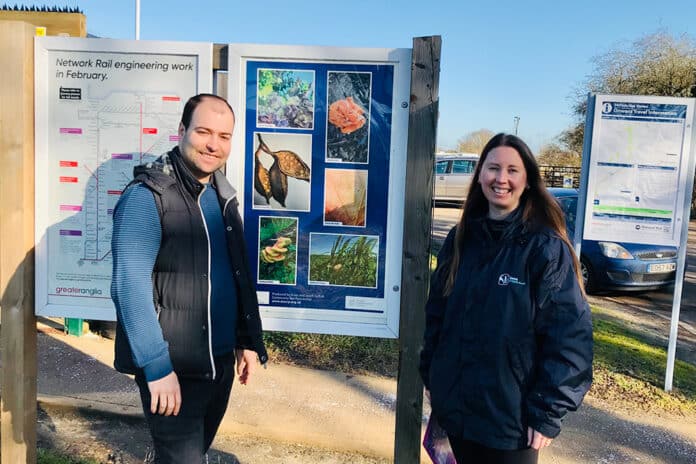Battlesbridge station in Essex is becoming a focus for nature conservation thanks to local volunteers.
Nathan Dodd and Chris Honeyman, who volunteer with Greater Anglia as station adopters, have recently teamed up with Essex Wildlife Trust as Urban Wildlife Champions.
The father and son team has already extended the station’s garden area, installed a water butt and created a wildflower meadow area at the station on the Crouch Valley Line between Wickford and Southminster, working with Greater Anglia and the Essex and South Suffolk Community Rail Partnership.
Now, as Urban Wildlife Champions they aim to do even more to encourage and support wildlife, including installing bat boxes, insect refuges and more bird boxes and establish some hedgerows with extra guidance and help from the Essex Wildlife Trust.
Essex Wildlife Trust’s Urban Wildlife Champions initiative focuses on community-led conservation to help create a whole county of connected wildlife networks and thriving wildlife in addition to the 100 nature reserves it already manages.
Danielle Carbott, Wilder Communities Manager for Essex Wildlife Trust, said: “Evidence shows that if 1 in 4 people take action for wildlife, the scales can be tipped back in favour of nature. For this to happen, Essex needs community-led, grassroots action. We are supporting Urban Wildlife Champions across the county and encourage anyone with an idea or a project to come forward and get involved. ”
Chris Honeyman commented: “Over many years, different types of wildlife have taken the initiative to call Battlesbridge station home. By teaming up with the Essex Wildlife Trust, we’re helping to ensure this is protected and supported so that it continues to flourish.
“Such a scheme is only possible with teamwork and we are grateful for the support of our local Parish Council, Railscape, Greater Anglia, our local plant nursery and RHS Hyde Hall.
“So far we have created a wild meadow, installed a water butt to help save water and filled planters with native flowers casting a rainbow of colour which adorns the platform, thus making the site attractive to not only passengers but bees and butterflies as well and we are looking forward to achieving even more as Urban Wildlife Champions.”
The initiative complements Greater Anglia’s Station Adoption scheme which sees over 300 local people getting involved with enhancing their local rail stations for the benefit of their communities across the region.
Many of them are working to increase biodiversity at their rail stations to help provide a sanctuary for fragile local wildlife populations, with the railway increasingly being recognised by ecologists as a ‘green corridor’ where many different kinds of flora and fauna can thrive.
Photo credit: Greater Anglia



































 0113 2082620
0113 2082620 info@railbusinessdaily.com
info@railbusinessdaily.com 15 Mariner Court, Wakefield WF4 3FL
15 Mariner Court, Wakefield WF4 3FL

